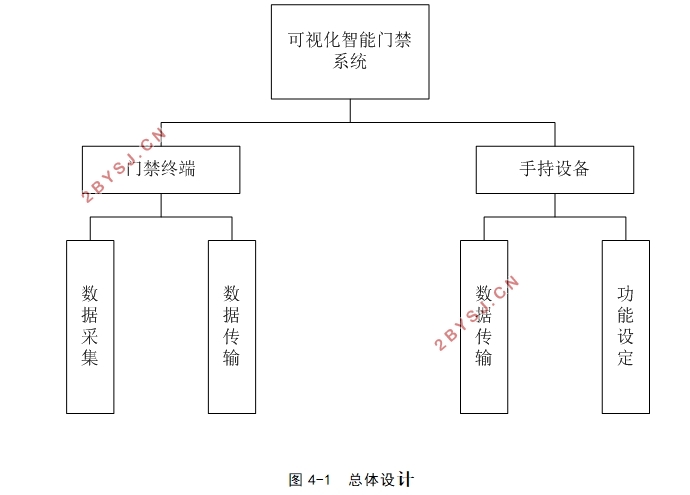基于STM32的可视化门禁系统设计
无需注册登录,支付后按照提示操作即可获取该资料.
基于STM32的可视化门禁系统设计(论文10000字)
摘要:随着智能技术的飞速发展和计算机应用的普遍推广,视频门禁系统在我们生活随处可见,住户的安全性得到大大的提高,也体现了门禁系统向智能方向发展的特点。本系统由上位机和下位机两部分组成,下位机采用了Cortex-M3教学科研平台UP-CUP-STM32-DVP作为硬件开发平台,采用STM32F103ZET6作为核心处理器,上位机也为以ARM为核心的移动手持模块,两者通过WI-FI相互通信并配备摄像头等模块,实现了一种基于ARM的可视化智能家居门禁系统。该系统操作简便,使用灵活,智能化程度高,节省物力、人力和时间,用户可以随时随地通过手机辨识来访者并控制门禁系统,视屏门禁的应用使家居安防的智能水平得到了提升,具有广阔的应用市场。
关键词:可视化;门禁系统;STM32;单片机
Abstract :
With the rapid development of intelligent technology and the popularization of computer application, access control system can be seen everywhere in our life. Household security has been greatly improved, which also reflects the development of access control system to intelligent direction. This system is composed of two parts, the upper computer and the lower computer. The lower computer uses the Cortex-M3 teaching and research platform UP-CUP-STM32-DVP as the hardware development platform, using STM32F103ZET6 as the core processor. The upper computer is a mobile handheld module with ARM as its core, both communicate through WI-FI and equipped with cameras and other modules. Which implement of a ARM based visual intelligent home access control system. The system is easy to operate, flexible to use, high degree of intelligence, saving material, manpower and time. Users can access and control the access control system at any time and at any time by mobile phone. The application of video access control to make home security intelligent level has been improved, with a broad application market.
Key words: Visualization; System of access control; STM32; ARM

目录
第一章 绪论 3
1.1可视化智能家居门禁 3
1.1.1 研究背景 3
1.1.2 研究意义 3
1.2 嵌入式概述 3
1.2.1 嵌入式简介 3
1.2.2 嵌入式应用 4
1.3 智能家居概述 5
1.4 国内外研究现状 5
第二章 系统分析 5
2.1 系统总体需求 6
2.2 功能模块 6
2.3 典型应用场景示意图 6
第三章 硬件设计与实现 7
3.1 硬件总体设计 7
3.2 门禁终端硬件设计 7
3.2.1 微处理器单元模块 8
3.2.2 访客呼叫模块 9
3.2.3 摄像头模块 9
3.2.4 无线传输模块 10
3.2.5 语音通讯模块 12
3.3 移动手持模块设计 14
3.4 KILL4的安装与使用 15
第四章 软件设计与实现 15
4.1总体设计 15
4.2 门禁终端软件设计 16
4.3 移动手持设备模块软件设计 18
4.4 数据传输 18
第五章 成果与测试 20
5.1 成果展示 20
5.2 系统测试 22
5.2.1系统主要功能模块测试 22
5.2.2测试结果 23
第六章 特色与展望 24
参 考 文 献 : 25
